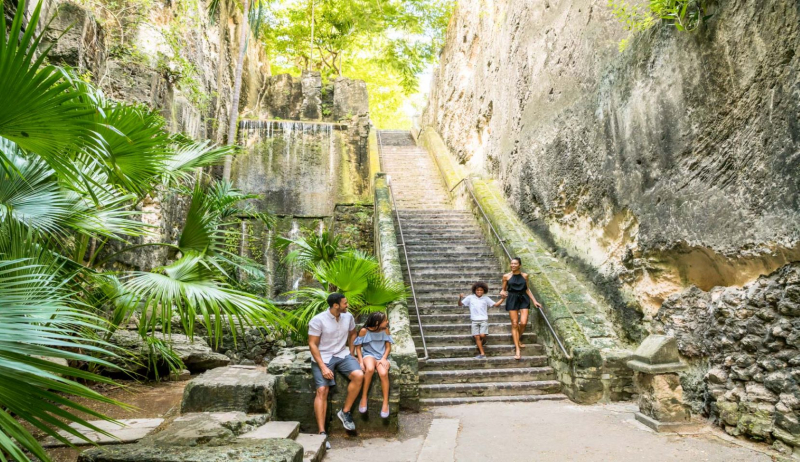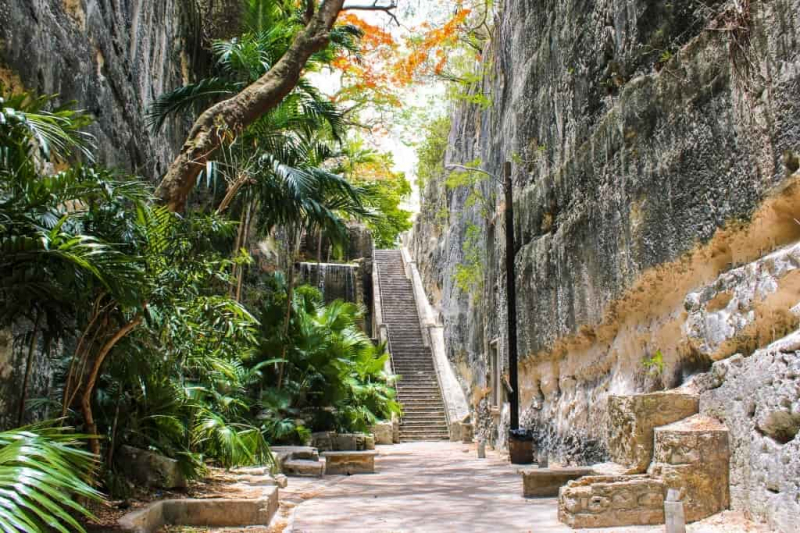Queen's Staircase
The Bahamas became a target for European marauders seeking control of the Caribbean near the end of the 18th century. Because the British had previously colonized the country, they were afraid of an invasion, therefore forts such as Fort Fincastle, Fort Montagu, and Fort Charlotte were built (all of which remain standing today). Because of Fort Fincastle's strategic location at the summit of Bennet's Hill, Nassau's highest point, a direct access route to the fort was required in the event of an attack, prompting the construction of a staircase to begin in the late 1700s.
The Queen's Staircase, also known as the 66 steps, was hand-carved by 600 slaves who used pick axes and hand tools to chisel their way through solid limestone, and it took over 16 years to construct. Only decades later was the magnificent staircase renamed in honor of Queen Victoria's 65-year reign, "who had signed a declaration to abolish slavery on her assumption to the throne in 1837." The Queen's Staircase is still used today as both a route to Fort Fincastle and a shortcut to Bennet's Hill.
Google rating: 4.5/5.0
Location: Elizabeth Ave, Nassau
Website: bahamas.com/natural-wonders/queens-staircase












